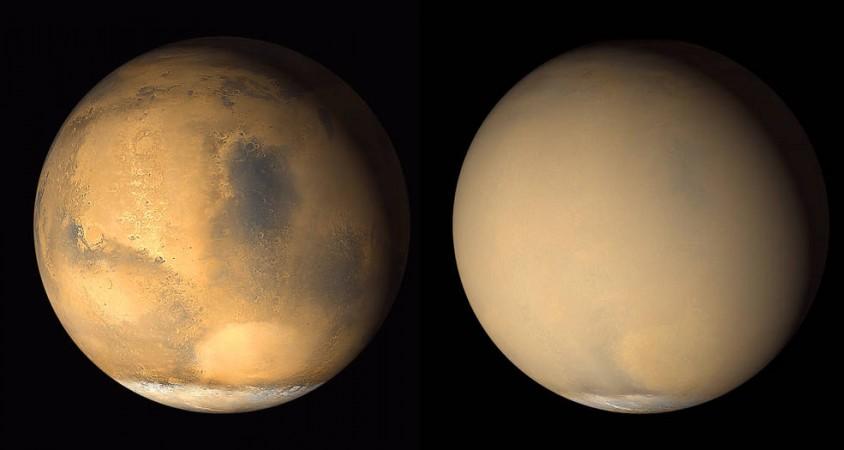
Mars, the solar system's very own Red Planet, was once a wetter and warmer world. But it eventually transformed into today's arid, frozen planet due to a unique process of gas escaping from the top of its atmosphere.
While scientists previously knew about the phenomenon, a new study has suggested that dust storms on the Martian surface likely play a role in the ongoing process of gas escaping from the planet's atmosphere. The study was published this week in the journal Nature Astronomy.
The current study is based on observations by NASA's Mars Reconnaissance Orbiter (MRO) during the most recent Martian global dust storm in 2007. But scientists are expecting to unearth more details as a massive dust storm is likely to hit Mars this year, growing "so grand it darkens skies around the entire Red Planet."
"We found there's an increase in water vapour in the middle atmosphere in connection with dust storms," Nicholas Heavens of Hampton University, Hampton, Virginia, lead author of the study, said in a statement. "Water vapour is carried up with the same air mass rising with the dust."

It was NASA's Hubble Space Telescope, together with the European Space Agency's Mars Express orbiter, that detected the link between the presence of water vapour in Mars' middle atmosphere and escape of hydrogen from the top of the atmosphere.
However, discovery was made mainly in years without the dramatic changes produced in a global dust storm, according to NASA.
"It would be great to have a global dust storm we could observe with all the assets now at Mars, and that could happen this year," David Kass of NASA's Jet Propulsion Laboratory, Pasadena, California, the study's co-author, said in the statement.
Scientists have so far identified a pattern of multiple regional dust storms arising on Mars during the northern spring and summer. But in most Martian years, such regional storms don't normally swells into a global dust storm.
However, such expansion occurred in 1977, 1982, 1994, 2001 and 2007, with the next Martian dust season likely to begin this summer and last into early 2019.

















